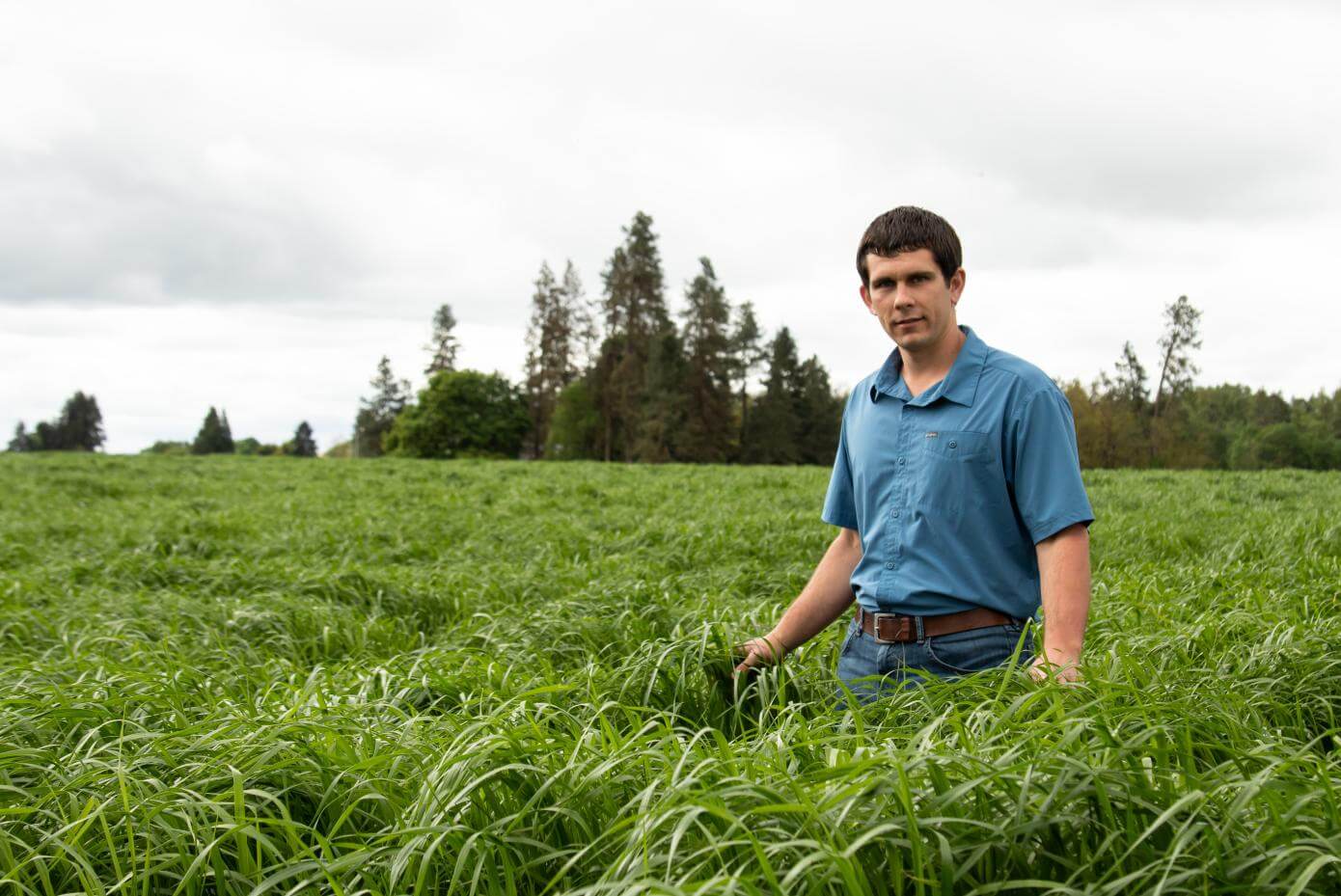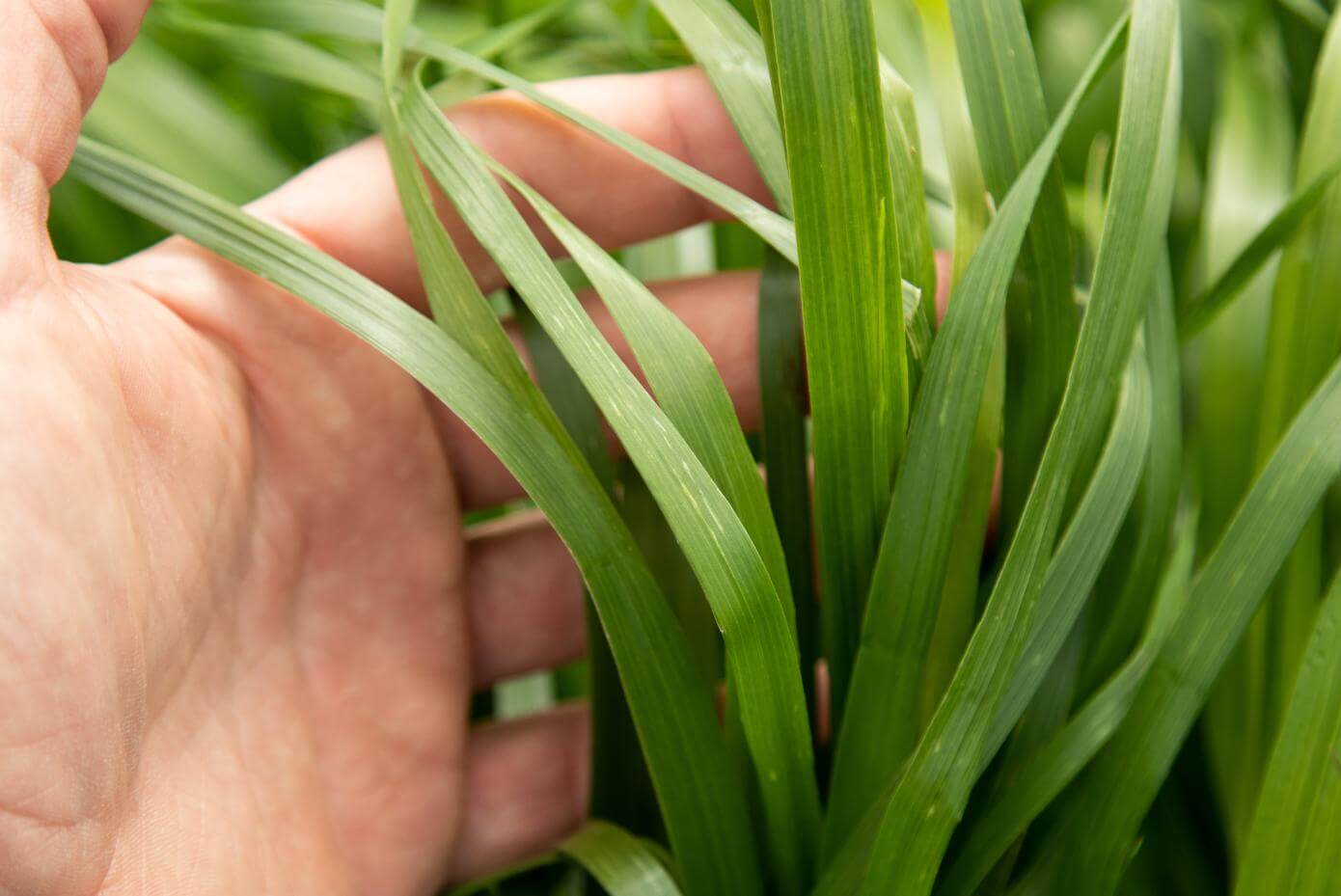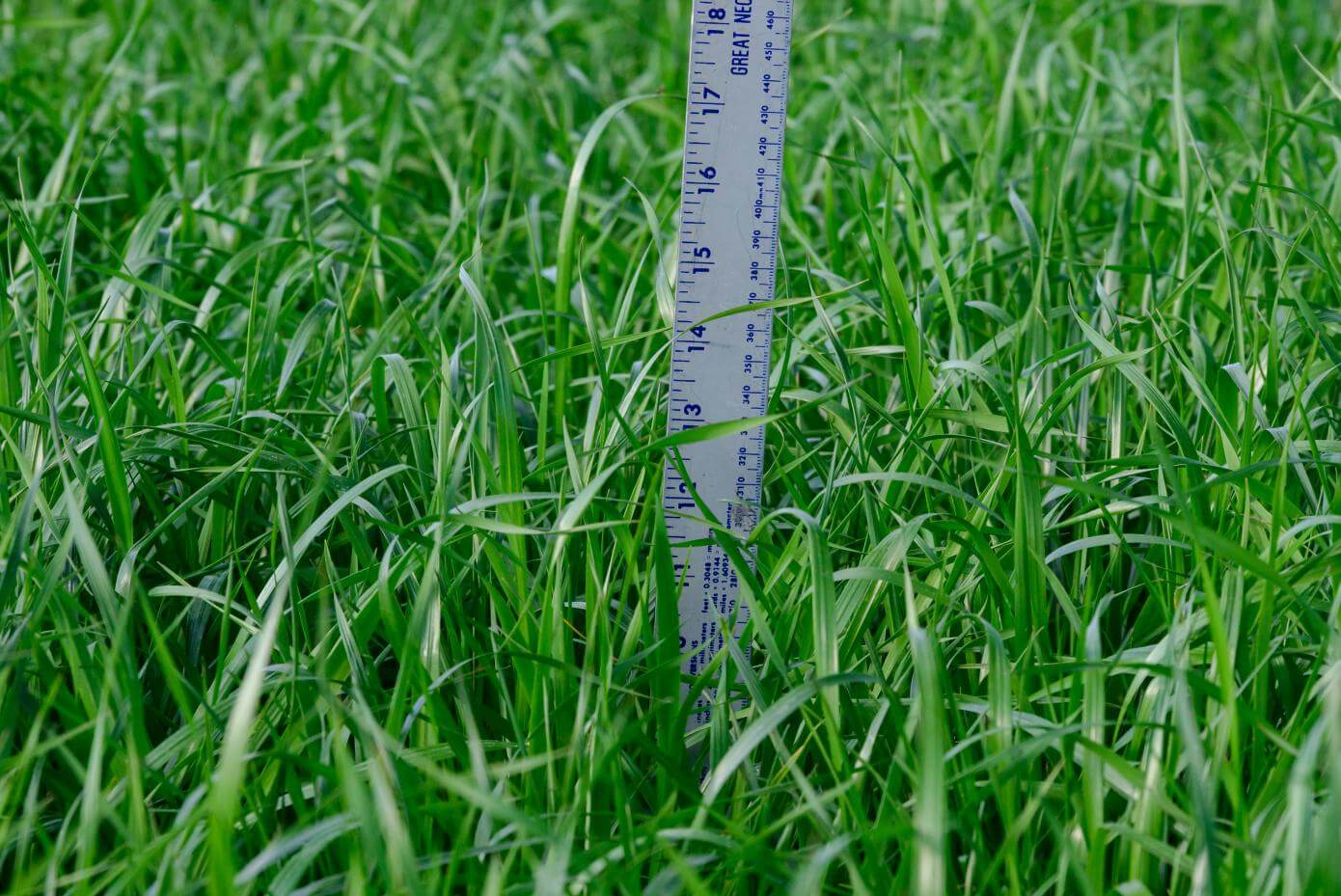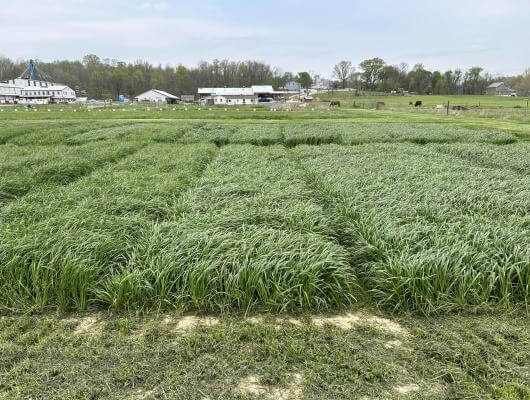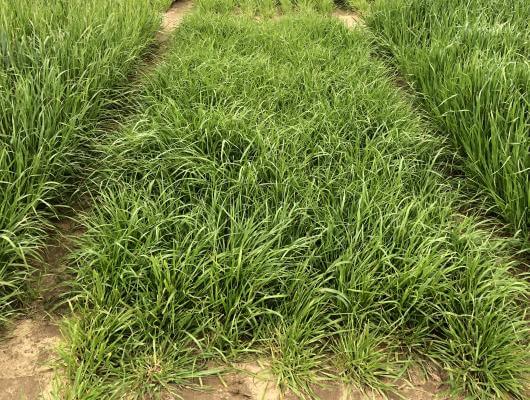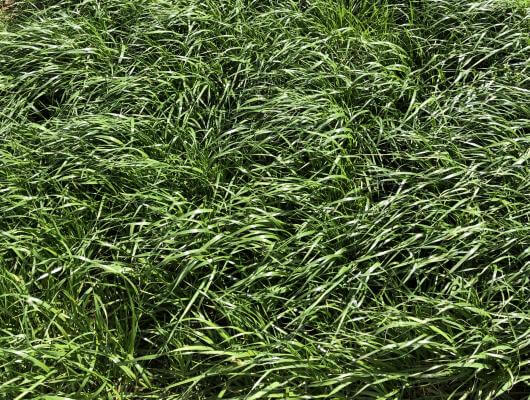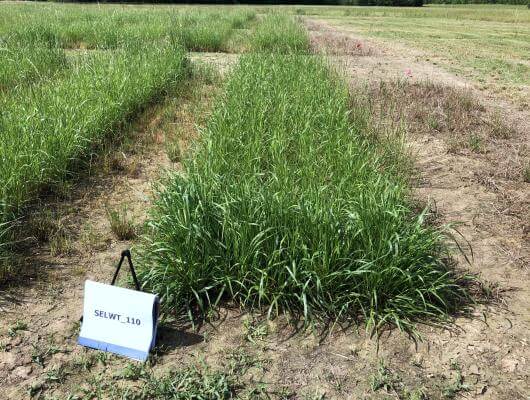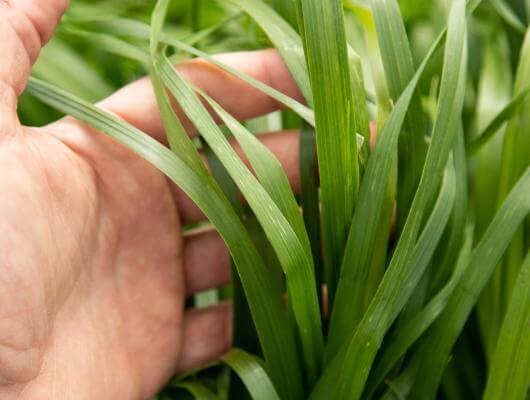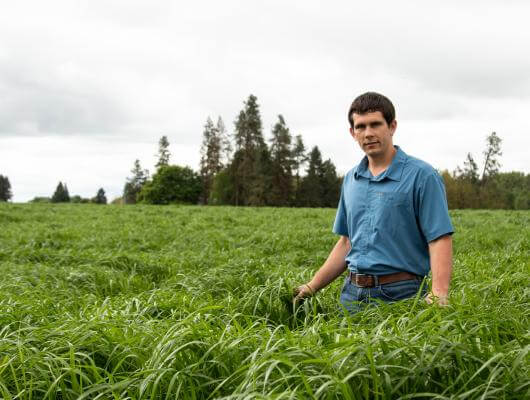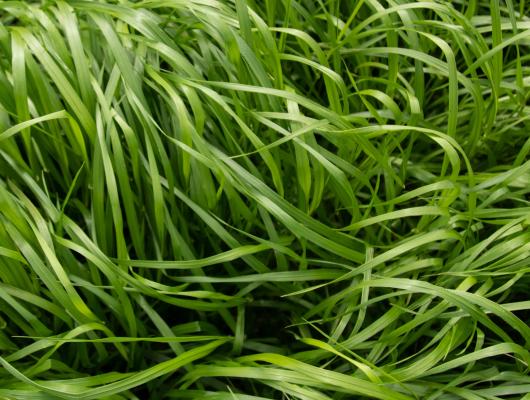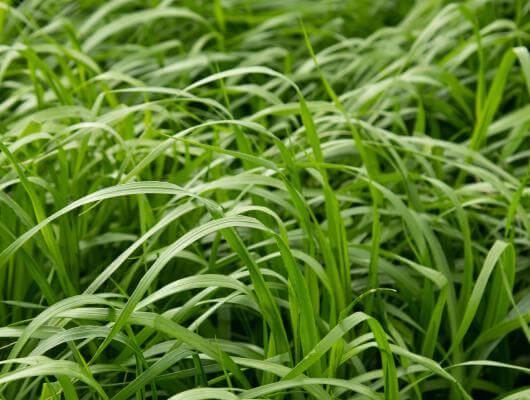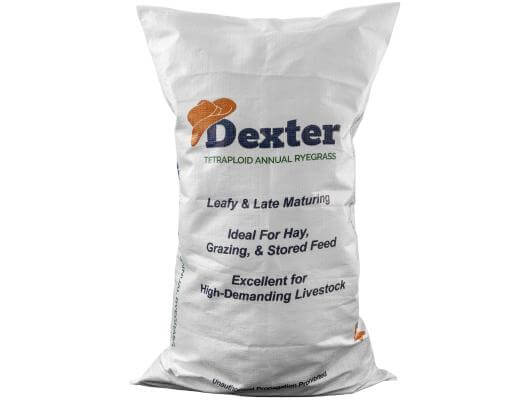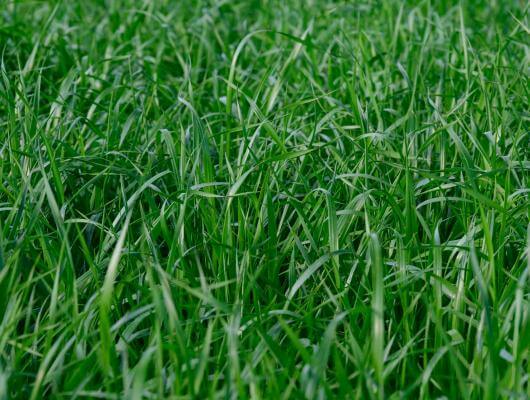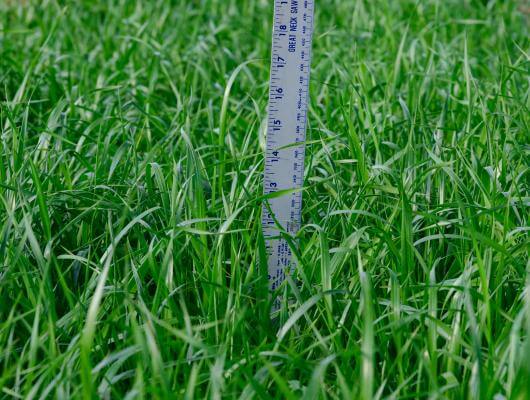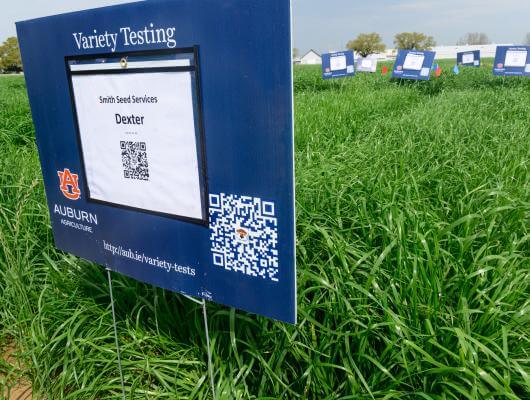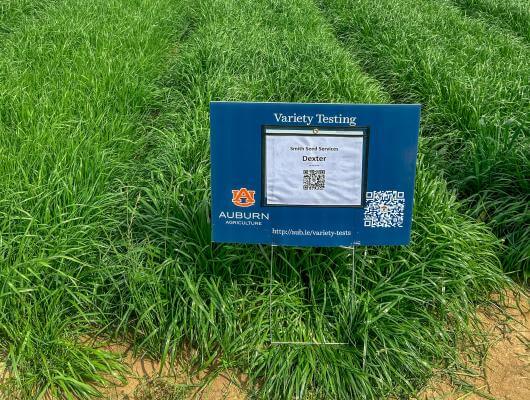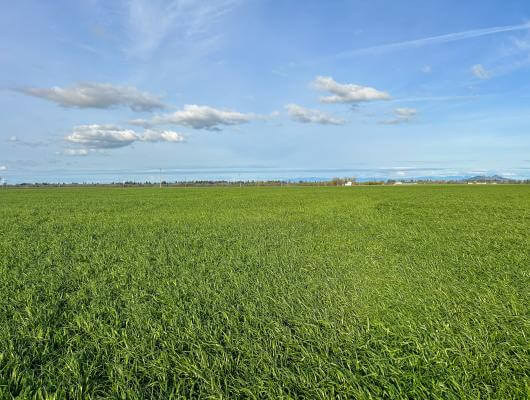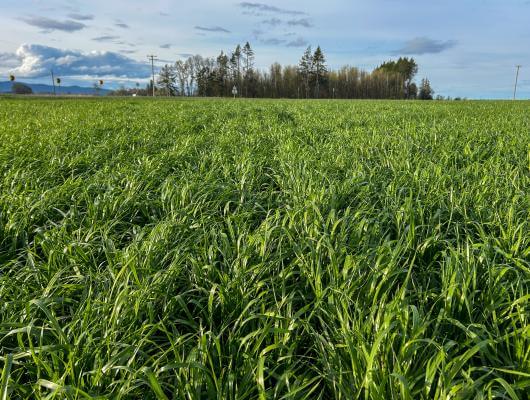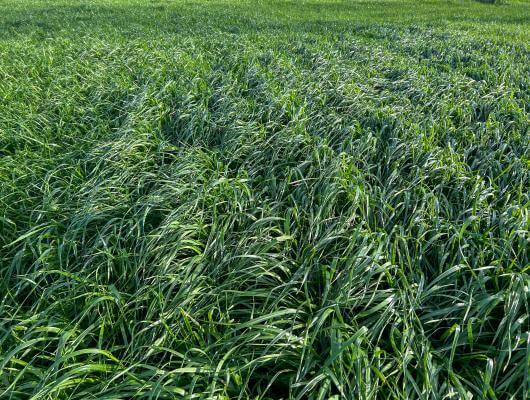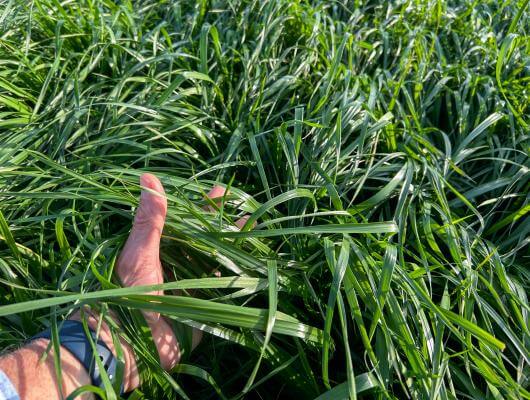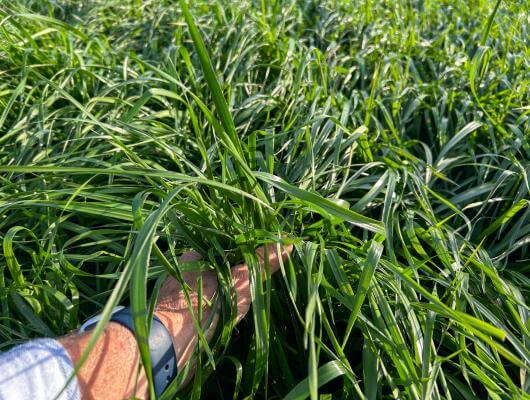Dexter Tetraploid Annual Ryegrass
Dexter stays vegetative longer! This leafy, late-maturing, high-quality tetraploid annual ryegrass is ideal for demanding livestock. Dexter may be safely grazed by all livestock, as well as harvested for stored feed. It can also be used as a cover crop.
Variety Summary
Dexter stays vegetative longer! This leafy, late-maturing tetraploid annual ryegrass is ideal for demanding livestock, such as dairy and beef cattle. Producers desiring high-quality forage late in the spring season will find Dexter an ideal choice. Dexter may be safely grazed by all livestock, as well as harvested for stored feed. It can also be used as a cover crop.
Late Season Growth/Minimal Stemminess
Dexter’s growth curve is notably later than many annual ryegrasses. This means Dexter remains vegetative, tender and lush longer.
University of Kentucky
Maturity
Lexington, KY
|2019-2020
| Variety | Maturity (May 21) |
|---|---|
| Dexter | 45.0 |
| Koga | 46.8 |
| Feast II | 49.9 |
| Marshall | 53.5 |
| Gulf | 56.0 |
| LSD | 3.2 |
Dexter for the North
Dexter has shown excellent cold tolerance, allowing Northern producers to plant it in either fall or spring. Fall plantings will provide minimal growth prior to winter and then become very productive in spring, remaining vegetative longer than many traditional annual ryegrass. With good regrowth, Dexter may be grazed or harvested multiple times late into the season.
For regions with limited growing seasons, Dexter may be planted in the spring and should remain vegetative for longer than many other annual ryegrasses.
University of Kentucky
Cold Tolerance (Injury Due to Cold)
Lexington, KY
|December 2019
| Variety | % Injury |
|---|---|
| Koga | 3* |
| Marshall | 4* |
| Dexter | 6* |
| Nelson | 43 |
| Feast II | 59 |
| Gulf | 70 |
| LSD P=.05 | 18 |
Dexter for the South
Southern producers transitioning to other summer annual crops needing late spring grazing or stored feed should find Dexter very useful. Producers overseeding permanent warm-season pastures should be aware that Dexter’s late growth may hinder or damage re-emergence of warm season species. We offer a number of other varieties, such as Rapido, better suited for early harvest.
Yield Data
Alabama
Auburn University
Dry Matter Yields (Total DM/A)
Marion Junction, AL
|2023-2024
| Variety | Early Season Harvest | Late Season Harvests | Season Total |
|---|---|---|---|
| March 14 | April 8, May 1 and May 24 | Four Harvests | |
| Highest yield* | 1681* | 5664* | 7033* |
| Mantis | 1681* | 5265* | 6945* |
| Dexter | 1267 | 5664* | 6931* |
| FrostProof | 1532* | 5168 | 6700* |
| Wax Marshall | 1029 | 5630* | 6659* |
| Baqueano | 1251 | 5355* | 6606* |
| Big Boss | 1379 | 5209 | 6588* |
| Credence | 1226 | 5111 | 6337 |
| Grits | 1055 | 4999 | 6054 |
| Gulf | 1039 | 4588 | 5628 |
| lsd | 777 | 890 | 1479 |
Kentucky
University of Kentucky
Forage Yield (Tons DM/A)
Lexington, KY
|2021-2022
| Variety | December 3 | April 30 | May 9 | June 6 | Total |
|---|---|---|---|---|---|
| Marshall | 0.91 | 1.84 | 1.01 | 1.00 | 4.75* |
| Winterhawk | 0.87 | 1.78 | 1.06 | 0.96 | 4.67* |
| Grazekeeper | 0.74 | 1.66 | 1.10 | 1.13 | 4.63* |
| Meroa | 0.81 | 1.71 | 1.08 | 0.98 | 4.58* |
| Koga | 0.81 | 1.66 | 1.03 | 1.02 | 4.52* |
| Dexter | 0.65 | 1.46 | 1.06 | 1.06 | 4.24* |
| FrostProof | 0.80 | 1.32 | 0.89 | 0.80 | 3.80 |
| Feast II | 0.62 | 0.71 | 0.98 | 0.87 | 3.17 |
| Gulf | 0.80 | 0.63 | 0.91 | 0.79 | 3.13 |
| LSD | 0.21 | 0.33 | 0.16 | 0.23 | 0.70 |
University of Kentucky
Forage Yield (Tons DM/A)
Lexington, KY
|2019-2020
| Variety | November 6 | April 1 | April 28 | May 21 | June 8 | June 25 | Total |
|---|---|---|---|---|---|---|---|
| Meroa | 1.16 | 0.64 | 1.04 | 0.84 | 0.62 | 0.27 | 4.56* |
| Dexter | 0.93 | 0.69 | 0.98 | 0.83 | 0.58 | 0.33 | 4.33* |
| Koga | 1.15 | 0.64 | 0.99 | 0.40 | 0.54 | 0.23 | 4.25* |
| Marshall | 1.07 | 0.72 | 0.92 | 0.76 | 0.45 | 0.30 | 4.22* |
| FrostProof | 0.98 | 0.70 | 0.81 | 0.77 | 0.38 | 0.29 | 3.93* |
| Grazekeeper | 0.61 | 0.73 | 0.84 | 0.80 | 0.53 | 0.25 | 3.76 |
| Feast II | 0.90 | 0.36 | 0.83 | 0.82 | 0.45 | 0.29 | 3.64 |
| Gulf | 1.09 | 0.27 | 0.77 | 0.63 | 0.39 | 0.21 | 3.36 |
| LSD | 0.37 | 0.14 | 0.24 | 0.18 | 0.15 | 0.11 | 0.57 |
University of Kentucky
Forage Yield (Tons DM/A)
Lexington, KY
|2019-2020
| Variety | Yield Total (5 Cuttings) |
|---|---|
| Dexter | 4.33* |
| Koga | 4.25* |
| Marshall | 4.22* |
| Winterhawk | 3.84 |
| Feast II | 3.64 |
| Gulf | 3.36 |
| LSD | 0.57 |
Dexter's Forage Quality Data
University of Tennessee
Forage Quality
Greeneville, TN
|2018-2019
| April 22 | CP | ADF | NDF | TDN |
|---|---|---|---|---|
| Koga | 18.02 | 33.24 | 59.37 | 63.79 |
| Dexter | 14.32 | 33.21 | 53.94 | 63.82 |
| Marshall | 12.22 | 29.23 | 50.01 | 67.99 |
| Average* | 14.32 | 31.35 | 52.33 | 65.77 |
| May 29 | CP | ADF | NDF | TDN |
| Dexter | 10.46 | 44.87 | 67.69 | 51.60 |
| Koga | 10.20 | 44.90 | 67.59 | 51.57 |
| Marshall | 9.47 | 38.80 | 60.63 | 57.96 |
| Average* | 8.98 | 42.05 | 66.01 | 54.55 |
Planting Instructions
Prior to Planting
For optimal performance, prior to planting, obtain a soil test. Amend soil according to recommendations and fertilize after planting according to recommendations and use.
How to Plant
Dexter can be drilled or broadcast into either a prepared seedbed or an existing sod bed. For prepared seedbed, lightly disc and pack well. For existing sod bed, reduce existing sod height as much as possible.
Fertilization
Application of fertilizer (following soil test recommendations) throughout the growing season and/or use of legumes will provide maximum forage tonnage and root growth.
Seeding Rate
Planting Dates
Dexter can be planted throughout the year. However, maximum utilization will be obtained by planting in the fall as soon as adequate moisture is available. If planted at other times of the year, performance will be limited.
Planting Map
Planting Depth
1/8"-1/2"
Optimal pH
6.0-7.0
Germination
5-10 days
Fertilizer
Application of fertilizer (per soil test results) throughout the growing season and/or use of legumes will provide maximum forage tonnage and root growth.
